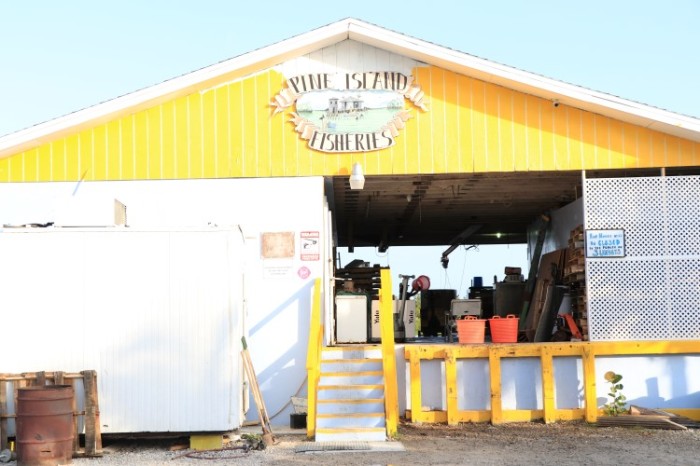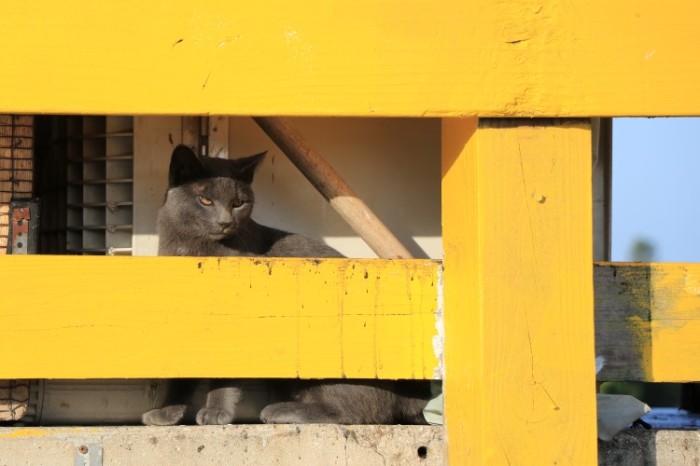
Photo: Kelly Dean
The Commercial Fishermen of Florida: An Introduction
By Kelly Dean
Chances are, if you’ve eaten fresh fish in Florida, it likely didn’t come from one of those huge trawlers you’re accustomed to seeing in magazines. These are for large-scale commercial purposes and have legal restrictions. Most net gulf seafood, like shrimp in federal and state waters, and ultimately send their bounty to parts unknown.
In Florida, to sell fish to a wholesaler, a fisherman needs a saltwater products license (SPL). These allow sales only to wholesalers. Wholesalers need a Wholesale Saltwater Products Dealers License (WD) to sell to a licensed dealer or restaurant. And they need a Retail Saltwater Products Dealer’s License (RC) to sell to the public.
Some fish cannot be legally mass-netted anymore in Florida water, so smaller cast and seine nets, hook and line and other legal tactics must be employed, depending upon the fish species. If that’s the case, local guys have as much opportunity as the big boys to make a living. A day’s work can create a day’s pay.

Photo: Kelly Dean
So if you’re munching on a piece of truly fresh local fish, the chances are good that it came from one or two guys operating a boat out of the coastal bays and estuaries nearby – that is, if the fish is truly fresh.

Local fisherman getting ice, Photo Kelly Dean
The local economy
These small operations, simple local fishermen, make their living supplying bait and fresh fish to the local shops, markets and restaurants. There is a wholesaler in the mix, but this is as fresh as fish gets.

Photo: Kelly Dean
This wholesaler (WD license) is usually a fish house that accepts, weights, and often cleans and chills the fish for wholesale to local fish sellers (RC license) and restaurants — some sell retail (RC) to regular folks as well.

Photo: Kelly Dean
Here’s a local tip, the price is not that different from your local Publix’s frozen fish section, and the choices are far greater. So buying truly fresh fish is a Florida luxury worth adopting.

Photo: Kelly Dean
The wholesale price usually reflects prepping and cleaning effort and the fish are never lowered to a frozen state. Ice floating in salty water does not deep freeze the fish to a crystalline state, so this is how it’s generally kept: very cold but not frozen because saltwater doesn’t freeze. The meat looks the same as the moment it was caught. The ice is generally non-chlorinated, because it makes a difference in the preservation and flavor.

Photo: Kelly Dean
These inshore boats are not fancy; there’s seldom elaborate electronics. The motor might be mounted in the center of the boat for easier navigation and to keep it away from the lines. They wear stylish white rubber boots, sometimes called Nikes or Reeboks in jest. If they are dragging in nets or crab pots, they are wearing chest-high waders in the boat as not to be constantly wet. They follow a similar routine every day.

Photo: Kelly Dean
Bait fish fishing and netting
Bait fishermen net everything from shrimp to mullet to pinfish schools and sell it to bait shops, if that’s their customer. Mullet is often caught and sold as pre-cut bait too. This sale is usually direct to the shop.
Fish houses are not always equipped to handle fish for both food (ice and refrigeration) and bait (aerated and live), so they are generally separate specialties. Species used for both the table and bait are sold as table fare.
Inshore fish
Fresh shrimp and mullet are also sold for the table. They work legal netting for mullet, following the a change in the laws in the late 90s when they were over-pressured.
Some use hook and line for game fish like gray snapper and schooling mackerel, for example – whatever is available. Limits are state-regulated of course. Offshore fish that venture inshore are common and a real treat when available and state regulations apply.

Photo: Kelly Dean
The netting and crab boats are generally a long johnboat design with a lot of working space for nets, traps and coolers aboard.

Crab traps (pots) with floats. Photo: Kelly Dean
Inshore hook and line fishermen employ various boats designed for shallow water, from johnboats to flats boats to bay boats, depending upon what they seek and where it’s located.

Photo: Kelly Dean
Professional hook and line fishermen as well as crab folks generally net or catch their own bait first as well. Bait is readily available, so why not?
Bait shop bait is largely intended for, and marketed toward, the occasional sport fisherman and some busy charters. Licensing is still required.
Offshore fish
Offshore, fishermen work snapper, grouper, mahi mahi (dolphinfish), shark, mackerel and many others with hook and line. These choices are the most readily available on Florida menus.
These boats are offshore boats so they are generally longer, larger and designed for this type of water and often target a certain species or two on a given day. Baitfish include, ballyhoo, flying fish, chunks of mackerel and so on. Their techniques and restrictions are similar to what offshore blue water recreational anglers utilize.
When they get “on” your favorite species, that fish becomes the fish of the day at your local restaurants. Otherwise, you’ll have to wait for another day. The many tactics employed depend upon the fish sought.

Stone crab, Photo: Kelly Dean
To your table
Fish like grouper, snapper, mullet, as well as trapped crustaceans like stone crab, blue crab, are almost entirely caught by small, local independent fishermen — and it’s ridiculously fresh.

Fried Mullet, Photo: Kelly Dean
So this brings up a question: Why go to a grocery store where the freshness is questionable — and the fish comes from wherever — when you can get the real deal from a local fisherman?

The best job ever — cat in a fish house, Photo: Kelly Dean


